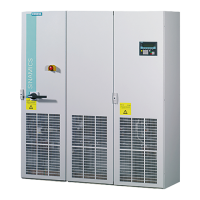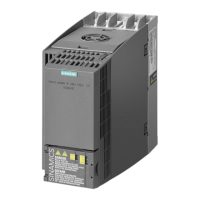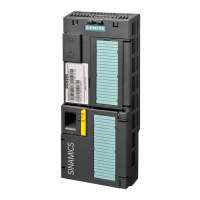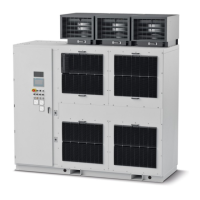SINAMICS G130
Engineering Information
SINAMICS Engineering Manual – November 2015
Ó Siemens AG
298/528
The flowchart below illustrates the process for doing this.
Flowchart illustrating the process for calculating Braking Module and braking resistor
To reduce the voltage stress on the motor and converter, the response threshold of the braking unit and thus also the
DC link voltage V
DC link
which is generated during braking can be reduced in operation at low line supply voltages
within the relevant line supply voltage ranges (380 V to 400 V, 500 V or 660 V). However, this also means a
corresponding decrease in the attainable peak braking power due to P
peak
~ (V
DC link
)
2
/ R with the reduction factor
k = (lower response threshold / upper reponse threshold)
2
.
The upper response threshold is set in each case at the factory. The settable response thresholds and corresponding
reduction factors k are shown in the table below.
Line supply voltage
Response threshold V
DC link
with corresponding reduction factor k
380 V – 480 V 3AC 774 V (k=1) or 673 V (k=0.756)
500 V – 600 V 3AC 967 V (k=1) or 841 V (k=0.756)
660 V – 690 V 3AC 1158 V (k=1) or 1070 V (k=0.853)
Response thresholds of Braking Modules and corresponding reduction factors k
Example calculation:
The purpose of this calculation is to determine for a SINAMICS G130 converter Chassis unit with an output power
rating of 450 kW at 400 V whether the braking unit with a continuous power rating of P
DB
= 50 kW or P
20
= 200 kW
available for the Power Module is suitable for the application described below. The diagram shows the required
braking power characteristics over time.
Braking power
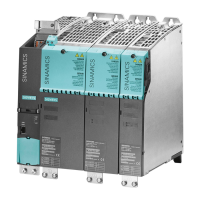
